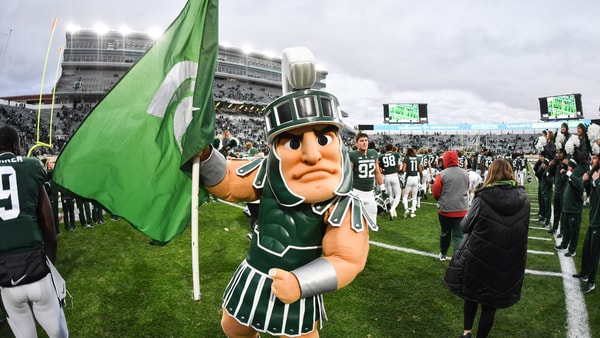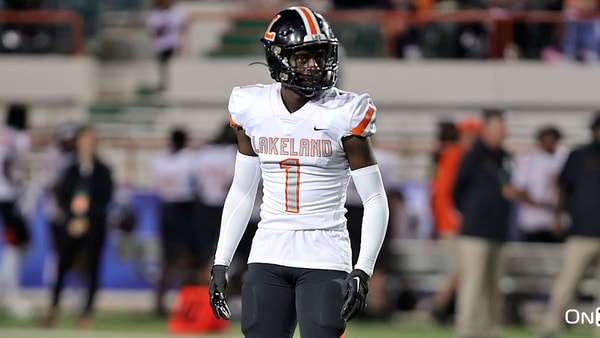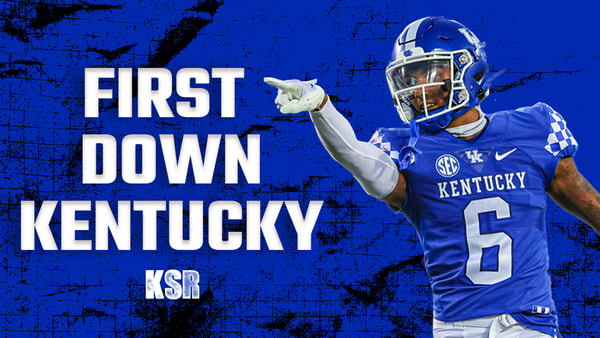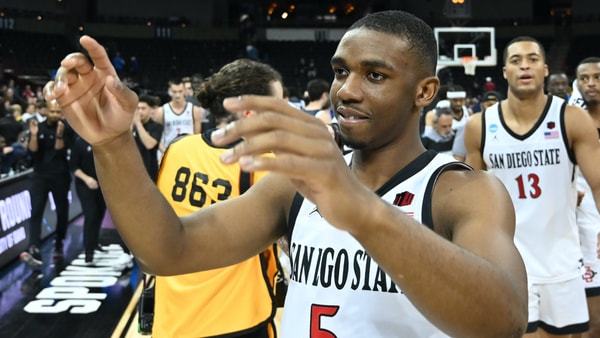"Offense sells tickets. Defense wins games. Rebounding wins championships."--attributed to a million different people from Pat Summit to my 3rd grade basketball coach.
We've all heard the quote a billion times. But is it true?
The Kansas City star publishes various college basketball rankings according to different statistics each week and today one of their writers raises an interesting point. Is rebounding the most reliable predictor of the strength of the team? Or can we more easily predict a team's success by looking at other statistics?
The main conclusion that their writer comes to is that, while other positive factors certainly contribute to a team's success,
the ability to make shots and keep your opponent from making them are probably the most important. He provides the FG% margin (Team's FG%-Opponent's FG%) for the top 25 teams in the land, which show Kansas to be number one by a long shot. A Kansas City Star reporter finds that Kansas is number one? Shocking.
I decided to put his conclusion to the test though, and I took a look at some historical data of final four teams from the past 5 years. (National Champions are highlighted)
| Year |
Team |
Rebound Margin |
Rebound Rank |
FG %Margin |
FG%Rank |
| 2005 |
UNC |
8.1 |
5 |
9.8 |
2 |
| 2005 |
UL |
0.9 |
154 |
7.8 |
11 |
| 2005 |
IL |
5.9 |
14 |
6.9 |
16 |
| 2005 |
Michigan St. |
5.2 |
21 |
5.9 |
25 |
| 2006 |
Florida |
3.6 |
59 |
10.1 |
3 |
| 2006 |
GeorgeMason |
2.1 |
105 |
9.3 |
4 |
| 2006 |
LSU |
7.8 |
6 |
6.6 |
13 |
| 2006 |
UCLA |
4.5 |
32 |
5.8 |
17 |
| 2007 |
Florida |
8.5 |
4 |
11.9 |
3 |
| 2007 |
Georgetown |
5.4 |
27 |
12.2 |
2 |
| 2007 |
OSU |
2.9 |
72 |
6.8 |
15 |
| 2007 |
UCLA |
3.1 |
75 |
5.5 |
31 |
| 2008 |
Kansas |
7.9 |
5 |
12.9 |
1 |
| 2008 |
Memphis |
6.2 |
16 |
7.5 |
9 |
| 2008 |
UNC |
11 |
1 |
6.2 |
26 |
| 2008 |
UCLA |
8.2 |
4 |
5.8 |
32 |
| 2009 |
UNC |
6.3 |
17 |
7 |
15 |
| 2009 |
Uconn |
8.9 |
3 |
9.7 |
2 |
| 2009 |
Villanova |
4.9 |
35 |
4.8 |
40 |
| 2009 |
Michigan St. |
9.3 |
1 |
3.5 |
66 |
Looking at the rebounding rankings vs. the FG% rankings, you can see that there is much more consistency with the later. All five of the champions have been in the top 20 in FG% margin, and only one team (Michigan St. '09) has been out of the top 50 in the category. In comparison, rebounding margins are widely varied, with '05 UL being the largest outlier coming in at 154.
And in case you wondered, here are Kentucky's final rankings for the past five years:
| Year |
Team |
Rebound Margin |
Rebound Rank |
FG % Margin |
FG% Rank |
| 2005 |
UK |
1.2 |
124 |
5.9 |
26 |
| 2006 |
UK |
2.9 |
80 |
2.2 |
101 |
| 2007 |
UK |
3.2 |
70 |
6.5 |
19 |
| 2008 |
UK |
1.5 |
125 |
7.3 |
13 |
| 2009 |
UK |
5 |
34 |
9.2 |
6 |
I think its safe to say that there is a stronger corelation between the FG margin and success than most other statistics. We all know intuitively that having a low turnover ratio and great rebounding skills and any other positive stat you can think of will make you a better team. But none of those stats mean anything if you can't put the ball in the basket or keep your opponent from putting it in. A turnover means very little if your opponent doesn't capitalize on it, just as a rebound means very little if you can't hit the resulting shot.
With that said, here are the FG % margin top ten through this weekend.
| Ranking |
Name |
FG% |
Opponent FG% |
Margin |
| 1 |
Kansas |
52.2 |
33.8 |
18.4 |
| 2 |
Syracuse |
53.7 |
36.9 |
16.8 |
| 3 |
Texas |
49.3 |
34.5 |
14.8 |
| 4 |
Baylor |
49.4 |
34.9 |
14.5 |
| 5 |
Florida St. |
47.1 |
34 |
13.1 |
| 6 |
BYU |
51.9 |
39 |
12.9 |
| 7 |
Miami (FL) |
49.5 |
36.8 |
12.7 |
| 8 |
Coastal Caro. |
50.1 |
37.5 |
12.6 |
| 9 |
Kentucky |
50.2 |
37.8 |
12.4 |
| 10 |
Georgia Tech |
47.2 |
35.4 |
11.8 |
One final note- While the NCAA publishes the rebound margin rankings, they don't have the FG% margin category. So you'll either have to take my word that my rankings are correct or do them yourself by hand.
Kate Martin is an accountant and Purdue University graduate currently living in Lafayette, Indiana. She joined Kentuckysportsradio.com in January of 2010 and can be reached at [email protected]. 







Discuss This Article
Comments have moved.
Join the conversation and talk about this article and all things Kentucky Sports in the new KSR Message Board.
KSBoard